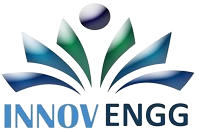Every project starts with excitement a clear vision, a solid goal, and a team ready to deliver results. But as deadlines approach and costs begin to rise, that excitement can quickly turn into stress. Suddenly, timelines slip, budgets balloon, and scope expands beyond control. This is what’s known as a project overrun when your project exceeds its planned cost, time, or scope.
Project overruns are more than just inconvenient; they can derail client relationships, damage credibility, and drain valuable resources. Whether it’s due to poor estimation, scope creep, or communication breakdowns, overruns remain one of the biggest threats to project success in any industry.
The good news? Most of them are completely preventable. With the right planning framework, risk management approach, and communication strategy, teams can anticipate challenges before they escalate and deliver projects efficiently on time and within budget.
Here’s how you can plan like a pro and keep your projects on track.
Understanding the Root Causes of Project Overruns
Before you can prevent project overruns, you must first understand why they happen. Most overruns don’t occur overnight they stem from a combination of poor decisions, unclear goals, and weak communication.
One of the biggest culprits is poor initial planning and unclear objectives. When teams dive into execution without a defined roadmap, it becomes nearly impossible to stay on track. Underestimating costs and time is another common issue often driven by pressure to meet unrealistic expectations, which ultimately leads to budget blowouts.
Scope creep is another frequent challenge. As new requirements or “small changes” are introduced mid project, timelines stretch and costs rise. Without a structured change control process, scope creep can easily derail the entire effort. Add in inefficient communication and a lack of accountability, and even a well planned project can start falling apart.
Define Clear Project Objectives and Scope
Every successful project starts with clarity. Setting SMART goals Specific, Measurable, Achievable, Relevant, and Time bound ensures that your objectives are focused, measurable, and realistic. This clarity helps every team member understand what success looks like and what’s expected of them.
Next, create a strong project scope statement. It should clearly define deliverables, timelines, and exclusions. A well crafted scope statement is your first line of defense against confusion and uncontrolled changes.
Finally, make sure your objectives align with stakeholder expectations. Early engagement with clients, suppliers, and your internal teams is essential to avoid later disagreements.
Develop a Realistic Timeline and Budget
Unrealistic budgets and deadlines are the fastest path to overruns. Instead of relying on guesswork, use historical project data and industry benchmarks to create accurate estimates. Always include contingency buffers to manage unexpected delays, design revisions, or resource constraints.
Tools like Gantt charts, Microsoft Project, or Primavera can help you visualize dependencies, track progress, and ensure accountability.
Identify and Manage Risks Early
Every project carries risks — but successful teams identify and address them early. Conduct a risk assessment before your project starts to uncover potential issues like material delays, technical errors, or resource shortages.
Document these risks in a risk register, ranking each by likelihood and impact. For each item, define proactive mitigation measures rather than waiting for problems to escalate.
Strengthen Team Coordination and Communication
Even the best plans fail without proper communication. Clearly assign roles and responsibilities using a RACI matrix (Responsible, Accountable, Consulted, Informed). This ensures that every team member knows their role and who to report to.
Regular progress meetings, shared dashboards, and status updates help maintain alignment. Encourage collaboration between design, engineering, and procurement teams to minimize information gaps and delays.
Monitor Progress and Adjust as Needed
Monitoring progress isn’t just about tracking dates it’s about understanding performance. Use Key Performance Indicators (KPIs) such as cost variance, earned value, and schedule adherence to measure real progress.
Project management software provides real time visibility, making it easier to catch early warning signs. When changes occur, use a structured change control process to assess their impact before implementing them.
Learn from Every Project
Every completed project is an opportunity to improve. Conduct a post project review to capture lessons learned, success factors, and improvement areas. Build a knowledge base so future teams can benefit from past experience.
This continuous learning loop helps refine your planning accuracy and strengthen your organization’s project delivery culture.
Conclusion
Planning like a pro isn’t about making things complicated it’s about achieving clarity, foresight, and communication. By defining clear objectives, developing realistic plans, managing risks early, and ensuring strong coordination, you can prevent costly overruns and deliver lasting results.
Need expert support to streamline your project planning and execution?
Contact Innovengg today and get your free Project Planning Checklist the essential tool to start your next project the right way.

